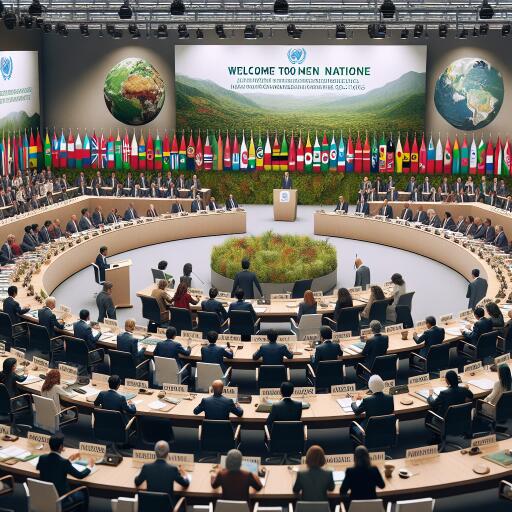
Global Leaders Gather in Nairobi to Tackle Environmental Crises at UNEA-6
In Nairobi, Kenya, a pivotal assembly has been convened, drawing together ministers of environment and leaders from over 180 countries for the sixth session of the United Nations Environment Assembly (UNEA-6). The primary focus of UNEA-6 is to fortify environmental multilateralism as a response to the triad of planetary emergencies: climate change, biodiversity loss, and pollution.
The assembly, which sets the agenda for global environmental policy and develops international environmental law, is a cornerstone in the fight against these crises. This year, participants are delving into an array of resolutions spanning from the adoption of nature-based solutions and the regulation of highly hazardous chemicals to combating land degradation, drought, and addressing the environmental impacts of mineral and metal resources.
Leila Benali, the UNEA-6 president and Morocco’s Minister of Energy Transition and Sustainable Development, underscored the critical juncture at which the assembly convenes. Pointing to the profound global turmoil, Benali emphasized the necessity of a multilateral diplomatic effort that yields direct and significant benefits to communities worldwide. She advocated for a paradigm of inclusivity, bringing to the table not just governmental voices but also those of the youth, indigenous communities, and emphasizing considerations of gender and human rights.
With the pressing challenges of climate change, the impending extinction of a million species, and pollution leading to premature deaths worldwide, UNEA-6 is charged with the task of considering 19 resolutions. These aim to foster a more robust multilateral environmental action, covering critical areas such as the circular economy, modifications of solar radiation, and equitable management of chemicals and waste, among others.
UNEP Executive Director, Inger Andersen, rallied for unity and action, emphasizing the necessity of political cooperation for the benefit of the planet and future generations. Andersen highlighted the urgency of the resolutions under discussion at UNEA-6 for fostering substantial multilateral environmental action.
Soipan Tuya, Kenya’s Cabinet Secretary for Environment, Climate Change, and Forestry, contextualized the assembly within the broader goal of pushing forward the UN 2030 Agenda for sustainable development. Noting the persistent realities of poverty and escalating economic inequality, Tuya framed UNEA-6 as a beacon of hope for addressing these intertwined challenges.
In a noteworthy example of the implementation of nature-based solutions, the Nigerian government, represented by Minister of State for Environment Dr. Iziaq Adekunle Salako during a side event, highlighted significant initiatives. These include the Great Green Wall programme, which has led to the creation of millions of plant and seedlings, reforestation efforts, and substantial job creation. Additionally, the Hydrocarbon Pollution Remediation Project aims to restore oil-degraded mangroves in the Niger Delta, demonstrating the potency of nature-based solutions in revitalizing biodiversity, and supporting community adaptation to climate change.
These initiatives exemplify the tangible ways in which nations are turning to nature to solve pressing environmental, economic, and societal challenges. Through restoration and sustainable management of natural resources, projects like the Great Green Wall and mangrove restoration in Nigeria offer blueprints for peace, job creation, and environmental sustainability, setting a course towards united global action against our planet’s most pressing crises.





Leave a Reply